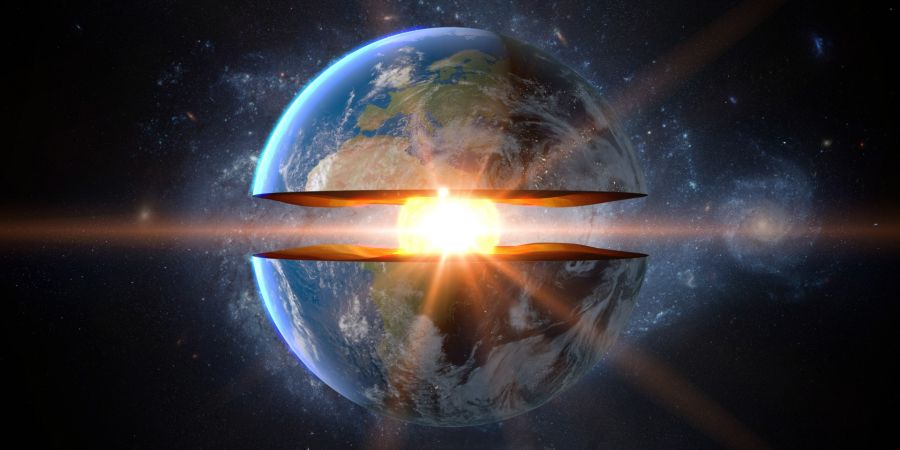

People have speculated about a hollow Earth, a globe with a populated interior. Science fiction, folklore, and myth all make reference to the idea. The hypothesis has, however, long been discredited by the scientific community as pseudoscience and an urban legend. Hence, is the hollow Earth real or a hoax?
Let's begin with what we know about the interior of the Earth. The crust, mantle, outer core, and inner core make up the layered structure of the Earth. The Earth's crust is the outermost layer, and its depth ranges from 5 to 70 kilometers. It is relatively thin. The mantle, the thickest layer, extends from the crust approximately 2900 kilometers below the surface. The inner layer is a fluid layer of iron and nickel that lies underneath the mantle, while the inward center is a strong circle of iron and nickel at the focal point of the Earth.
The idea of a hollow Earth is not supported by any scientific evidence. The Earth's mass and gravity would be very different from what we see if it were hollow. Additionally, the internal structure of the Earth can be clearly seen through earthquakes and other seismic activity. Scientists can get a detailed picture of the Earth's interior thanks to seismic waves' ability to penetrate deep into its interior.
Additionally, a hollow Earth is not supported by the physics and chemistry laws. Any hollow space could not exist without collapsing due to the intense pressure and heat in the Earth's interior. Any material that is not already molten would vaporize at the Earth's core, where temperatures are estimated to exceed 5000°C.
There are still those who hold to the hollow Earth theory despite the overwhelming evidence against it. The theory's proponents contend that a race of advanced beings live in the Earth's interior, while others believe it is a portal to other dimensions or a hiding place for UFOs.
The American physician John Cleves Symmes Jr. was one of the most well-known proponents of the hollow Earth theory. In the early 19th century, Symmes asserted that the Earth was hollow and that openings at its poles led to its interior. He even suggested undertaking a trip to the North Pole to test his theory. Although Symmes did not make the trip, his ideas gained some traction and motivated a number of explorers who set out to find the alleged entrances to the hollow Earth.
Science fiction authors like Jules Verne and Edgar Rice Burroughs popularized the concept of a hollow Earth in the twentieth century. The hollow Earth was portrayed as a fantastical world home to bizarre creatures and advanced civilizations in their novels.
In conclusion, scientific evidence has disproved the myth that the Earth is hollow. There is no reason to believe that the Earth is anything other than a solid sphere with a layered interior, despite the fact that it may have inspired fictional works and captured the imagination of some. The scientific community is unlikely to ever take the hollow Earth theory seriously given our growing knowledge of the Earth's structure and geology.
